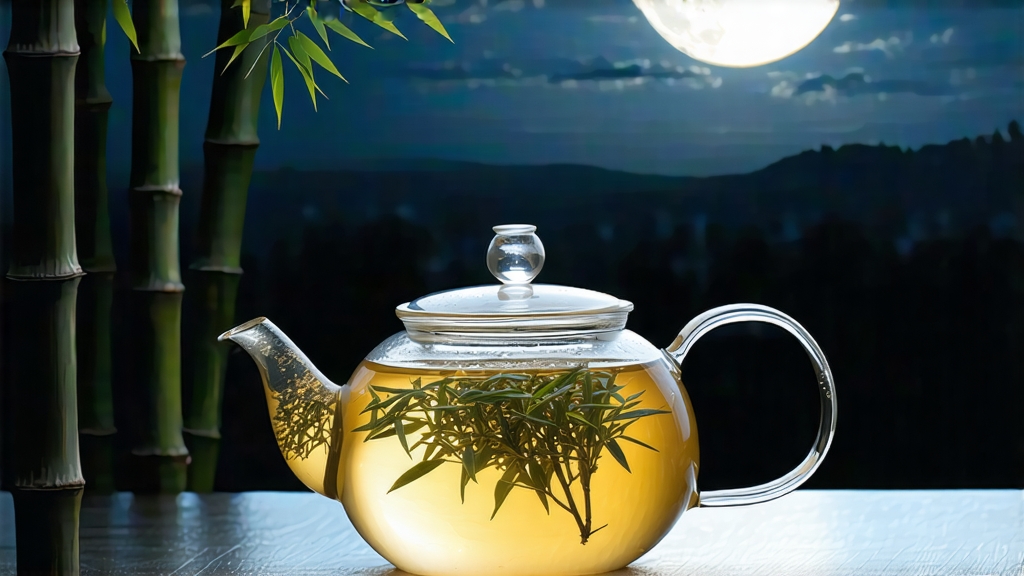
Among the six great families of Chinese tea, white tea is the least theatrical. It is not rolled into tight pearls like green tea, nor roasted over charcoal like oolong; it is simply picked and allowed to rest, as if the leaf itself were given a sabbatical to contemplate the weather. Within this minimalist lineage, Bai Hao Yin Zhen—literally “White-Hair Silver Needle”—is the most aristocratic. Composed only of unopened buds plucked during a fleeting April window, the tea looks like a handful of moonlight: pale, luminous, and so heavily furred with tiny white hairs that it seems to glow against dark wood. To understand Silver Needle is to listen to a quiet conversation between bud and breeze that has been repeated for almost 1,500 years along the granite ridges of Fujian’s Taimu Mountain.
Historical whispers
The first verifiable record appears in the Song-era “Treatise on Tea” (1107 CE), where Emperor Huizong praises “white buds as precious as gold” sent from the northern Min coast. Yet local monks claim an earlier provenance: during the late Tang, a wandering nun named Wen-Jing discovered wild tea trees whose buds turned silver under dawn mist. She dried them on bamboo trays, brewed them for sick villagers, and the pale liquor reportedly calmed fevers overnight. Whether legend or ledger, by the Ming dynasty Silver Needle had become tribute tea, escorted by mounted courier from Fuding to Beijing in wax-sealed bamboo casks. European courts encountered it only in the late 19th century, when Fuzhou exporters shipped it as “Pekoe Tips,” a luxury item that fetched more than silver itself in London auctions.
Micro-terroirs: two villages, two personalities
Today the denomination “Bai Hao Yin Zhen” is legally restricted to buds from Fuding and the neighboring county of Zhenghe. Though only 80 km apart, the two micro-climates produce strikingly different cup profiles. Fuding, granitic and maritime, gives needles that are plumper, with a higher amino-acid ratio; the infusion tastes of fresh lychee and almond milk. Zhenghe, red-soiled and slightly inland, yields slimmer buds richer in polyphenols; its liquor carries orchid nectar and a trace of white pepper. Purists compare the duo to Burgundy’s Chablis versus Meursault: kin, but not twins.
The craft of doing almost nothing
Harvest begins when the thermometer hovers between 15–20 °C and the bud’s “fish-tail” (the tiny leaf-let still clasping the stem) has not yet unfurled. Pickers work barefoot to avoid bruising the plant; nails must be trimmed short, rings forbidden. Buds are gathered into shallow bamboo baskets lined with gauze, never deeper than 5 cm, then carried to the withering loft—a sun-drenched attic whose windows are curtained with hemp. Here the buds sleep for 36–48 hours on reed trays, losing moisture in slow motion while enzymatic magic coaxes out floral precursors. No heat, no manipulation; only the whisper of mountain air and the occasional turn of a wrist. When the bud’s moisture drops to 10 %, a charcoal baker finishes the tea for twenty minutes at 40 °C, just enough to fix the aroma without caramelizing sugars. The entire process is governed by the regional proverb: “Three parts human, seven parts heaven,” acknowledging that weather remains the true master.
How to coax moonlight into a cup
Silver Needle is shy; it rewards patience and punishes impatience. Start with soft water—TDS below 100 ppm—brought to 80 °C. Weigh 3 g of buds for every 150 ml of water; their density is deceptively light, so a tablespoon may look excessive. Use a tall glass or a gaiwan of porcelain so pale that it functions as a mirror. Rinse the buds briefly (three seconds) to awaken them, discarding the rinse. First infusion: 45 seconds, no lid; watch the hairs detach and drift like plankton. Second infusion: 30 seconds, add lid offset by a finger’s width to trap aroma while releasing heat. Third infusion: 60 seconds, cooler water (75 °C) to extract amino acids without tannic bite. By the fifth infusion the buds will stand needle-straight on the bottom, a silent forest of miniature spears. Stop when sweetness out